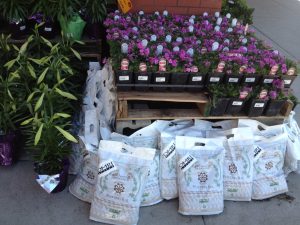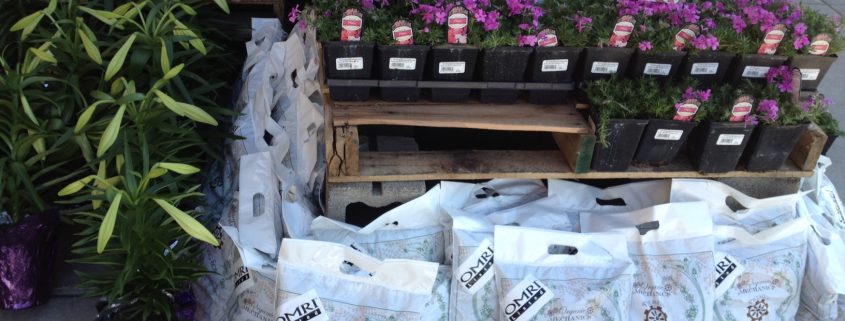Grow a Green Thumb and Garden for Good Health!
 Spring has certainly sprung, and this unseasonably warm winter has made April an even better month to begin your own garden. And what better week to do it than during “National Garden Week!” Even if it is just a small pot of fresh herbs, caring for a garden can make a difference in your health.
Spring has certainly sprung, and this unseasonably warm winter has made April an even better month to begin your own garden. And what better week to do it than during “National Garden Week!” Even if it is just a small pot of fresh herbs, caring for a garden can make a difference in your health.
According to a study published in Science magazine by Roger S. Urlich, researchers found that patients recovering from surgery who looked at views of nature had significantly shorter recovery periods than those looking at non-nature related images. It is believed that there is some electrical activity in the brain that positively responds to natural images. The activity involves a shift in emotional states which is said to boost immune function.
Besides the positive brain boosting gardening seems to promote, it is also a great way to get moving and escape our sedentary routines. Working on a garden may not seem like exercise, but the movements of bending down to pull weeds, shoveling out your garden plot, planting, and watering, all count towards daily physical activity. All this is being done in the fresh, outdoor air, where your body has the ability to absorb the sun’s Vitamin D, which so many are lacking in. There is also the obvious benefit of having your own fresh produce at your fingertips to use all summer long.
If you have never grown a garden before, fear not, it only involves a few simple steps to get your first garden going. First, decide where you will plant your garden. It is important to know the amount of space you are allotting to your plants because this can play a role in deciding what you grow. Some plants such as tomatoes and peppers can grow upwards on cages. You can plant them relatively close together so you can have quite a few of these in a small space. Other vegetables like squash and eggplant take up more room because they grow outward. Next, prepare the space for gardening. Loosen the soil with a hoe or rake. Then add in some organic material or topsoil which should be rotated into the soil about 1-1 ½ ft. deep. This ensures that the soil is mixed together well. Now you are ready to plant. Generally you want to dig a hole that is about twice the diameter of your plant to place it in.
onsult with the farm owners or nursery workers where you purchase your plants to find out more on how they grow, and on what plants grow best in your particular area. If you have a very limited amount of space or time, start with fresh basil, parsley, dill, and cilantro plants in a small pot on a windowsill or on the front steps of your home. No matter how big or how small, there are many benefits to having a home grown, healthy garden!
Whether you are gardening as a hobby or as a family activity, growing a garden provides exercise and a “no excuse” reason to eat your fruits and veggies.
Send me a picture of your vegetable garden!


Leave a Reply
Want to join the discussion?Feel free to contribute!